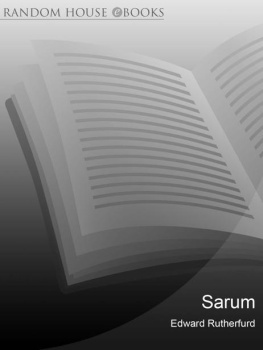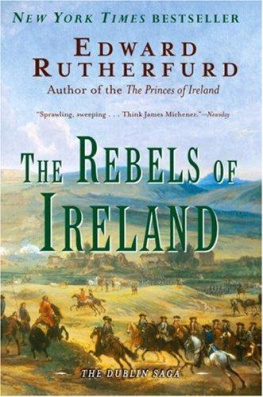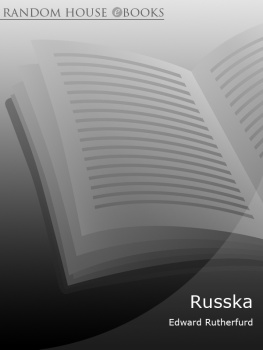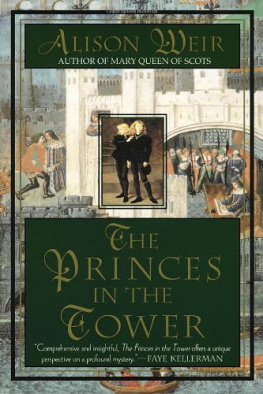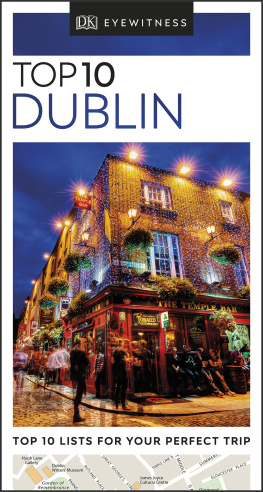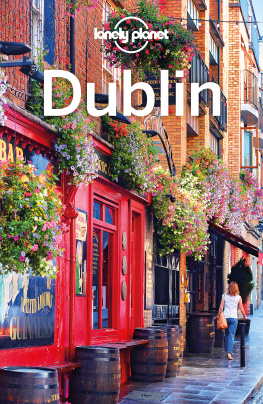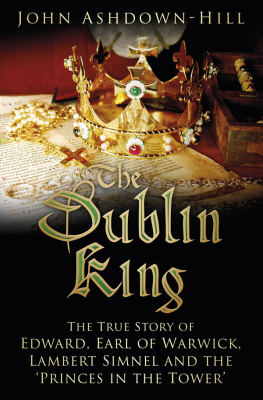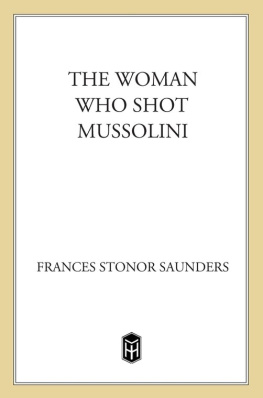Edward Rutherfurd - The Princes of Ireland: The Dublin Saga
Here you can read online Edward Rutherfurd - The Princes of Ireland: The Dublin Saga full text of the book (entire story) in english for free. Download pdf and epub, get meaning, cover and reviews about this ebook. year: 2004, publisher: Ballantine Books, genre: Art. Description of the work, (preface) as well as reviews are available. Best literature library LitArk.com created for fans of good reading and offers a wide selection of genres:
Romance novel
Science fiction
Adventure
Detective
Science
History
Home and family
Prose
Art
Politics
Computer
Non-fiction
Religion
Business
Children
Humor
Choose a favorite category and find really read worthwhile books. Enjoy immersion in the world of imagination, feel the emotions of the characters or learn something new for yourself, make an fascinating discovery.

- Book:The Princes of Ireland: The Dublin Saga
- Author:
- Publisher:Ballantine Books
- Genre:
- Year:2004
- Rating:5 / 5
- Favourites:Add to favourites
- Your mark:
- 100
- 1
- 2
- 3
- 4
- 5
The Princes of Ireland: The Dublin Saga: summary, description and annotation
We offer to read an annotation, description, summary or preface (depends on what the author of the book "The Princes of Ireland: The Dublin Saga" wrote himself). If you haven't found the necessary information about the book — write in the comments, we will try to find it.
The Princes of Ireland: The Dublin Saga — read online for free the complete book (whole text) full work
Below is the text of the book, divided by pages. System saving the place of the last page read, allows you to conveniently read the book "The Princes of Ireland: The Dublin Saga" online for free, without having to search again every time where you left off. Put a bookmark, and you can go to the page where you finished reading at any time.
Font size:
Interval:
Bookmark:
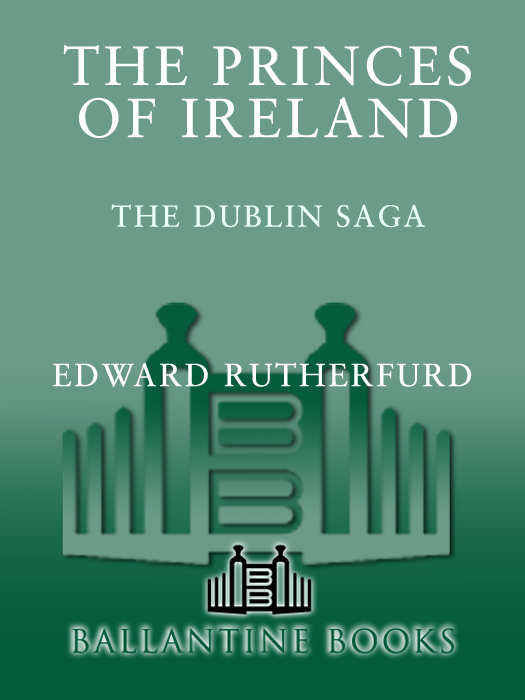
THE PRINCES OF IRELAND
A sweeping, carefully reconstructed portrait of a nation from birth to midlife crisis
The New York Times

Rutherfurd conducts a spellbinding tour of ancient Ireland. Like James Michener and Leon Uris, Rutherfurd does a magnificent job of packaging a crackling good yarn within a digestible overview of complex historical circumstances and events.
Booklist
Sarum
Russka
London
The Forest
The Rebels of Ireland:
The Dublin Saga
New York
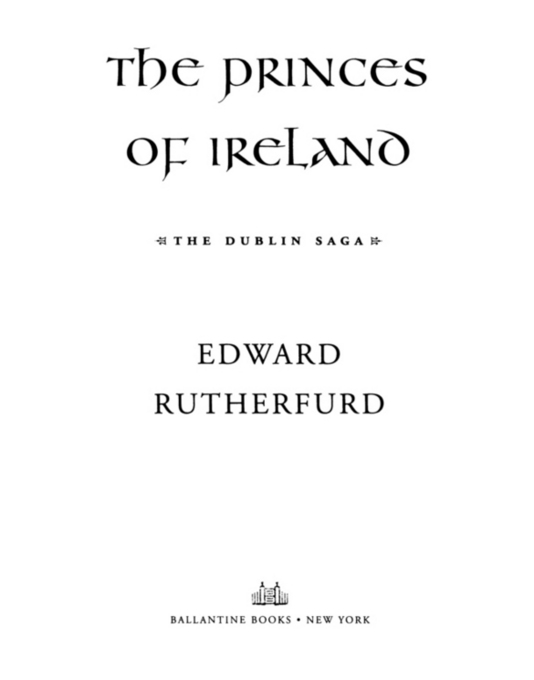
The Princes of Ireland is a work of fiction. Names, characters, places, and incidents are the products of the authors imagination or are used fictitiously. Any resemblance to actual events, locales, or persons, living or dead, is entirely coincidental.
A Ballantine Book
Published by The Random House Publishing Group
Copyright 2004 by Edward Rutherfurd
All rights reserved.
Published in the United States by Ballantine Books, an imprint of the Random House Publishing Group, a division of Random House, Inc., New York, and simultaneously in Canada by Random House of Canada Limited, Toronto. Originally published by Doubleday, a division of Random House, Inc., New York, in 2004.
Ballantine and colophon are registered trademarks
of Random House, Inc.
www.ballantinebooks.com
Library of Congress Control Number: 2004097486
eISBN: 978-0-385-51257-2
v3.1_r1
For Susan,
Edward and Elizabeth
EMERALD SUN
DUBH LINN
TARA
PATRICK
VIKINGS
BRIAN BORU
STRONGBOW
DALKEY
THE PALE
SILKEN THOMAS
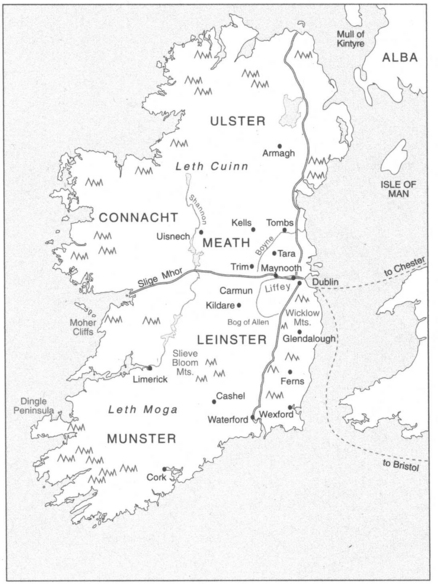
IRELAND
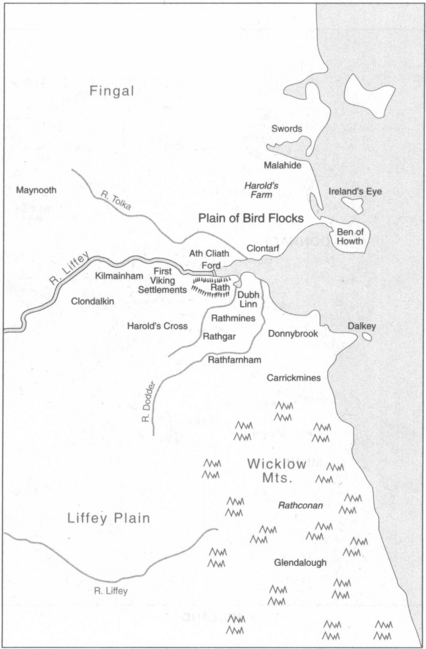
DUBLIN REGION
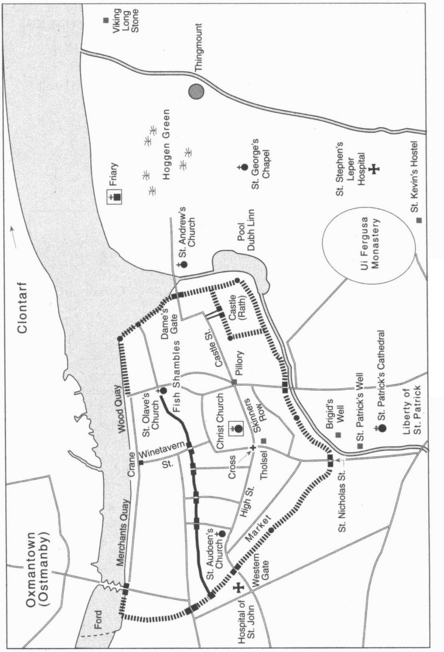
MEDIEVAL DUBLIN
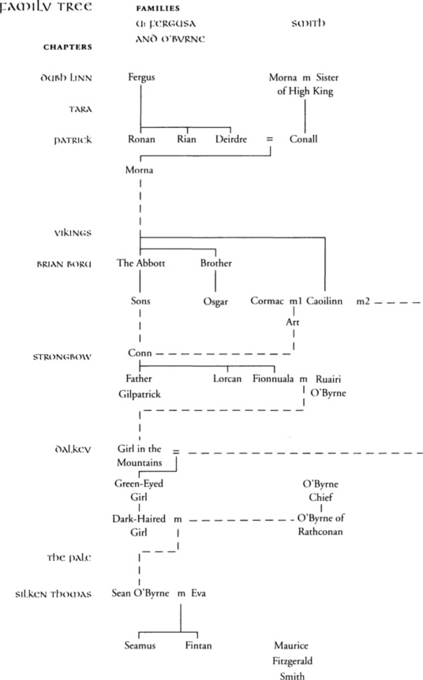
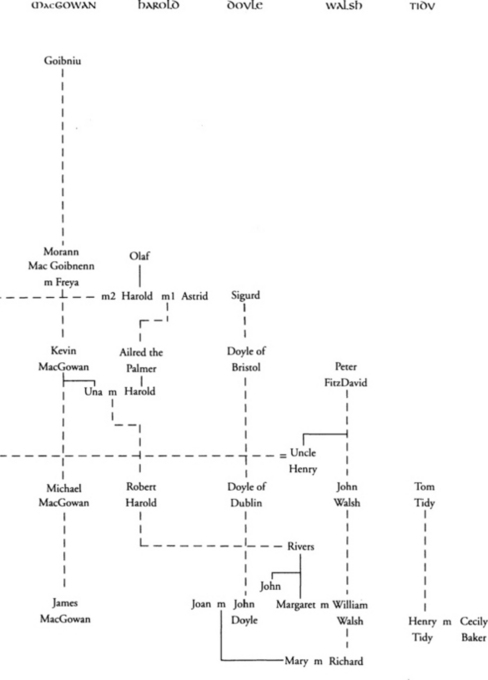
T HIS BOOK IS , first and foremost, a novel. All the characters whose family fortunes the novel follows down the generations are fictitious; but in telling their stories, I have set them amongst people and events that either did exist, or might have done. The historical context, wherever it is known, is given accurately, and where questions of interpretation arise, I have sought either to reflect, or give a balanced view of the opinions of todays best scholars. From time to time it has been necessary to make small adjustments to complex events in order to aid the narrative; but these adjustments are few and none does any violence to history.
In recent decades, Ireland in general and Dublin in particular, have been very fortunate in the quality of the historical attention they have received. During the extensive research required to write this book, I have been privileged to work with some of Irelands most distinguished scholars, who have generously shared their knowledge with me and corrected my texts. Their kind contributions are mentioned in the Acknowledgements. Thanks to the scholarly work of the last quarter century, there has been a reevaluation of certain aspects of Irelands history; and as a result, the story that follows may contain a number of surprises for many readers. I have provided a few additional notes in the Afterword at the end of this volume for those curious to know more.
Irish personal names, place names, and technical terms appear throughout in their most simple and familiar forms. Modern books published in Ireland use an accent mark, the fada, to indicate when a vowel is long and certain other forms of spelling to indicate correct pronunciation. To many readers outside Ireland, however, these forms might be confusing, and so they have not been used in the text of this novel. But I have provided a pronunciation guide with the Afterword, and readers uncertain about any word should find it there.
EMERALD SUN
L ONG AGO . Long before Saint Patrick came. Before the coming of the Celtic tribes. Before the Gaelic language was spoken. At the time of Irish gods who have not even left their names.
So little can be said with certainty; yet facts can be established. In and upon the earth, evidence of their presence remains. And, as people have done since tales were told, we may imagine.
In those ancient times, on a certain winters morning, a small event occurred. This we know. It must have happened many times: year after year, we may suppose; century after century.

Dawn. The midwinter sky was already a clear, pale azure. Very soon, the sun would arise from the sea. Already, seen from the islands eastern coast, there was a golden shimmering along the horizon.
It was the winter solstice, the shortest day of the year. If, in that ancient time on the island, the year was designated by a date, the system of designation is not known.
The island was actually one of a pair that lay just off the Atlantic edge of the European mainland. Once, thousands of years before, when both were locked in the great white stasis of the last Ice Age, they had been joined to each other by a stone causeway that ran from the north-eastern corner of the smaller, western island across to the upper part of its neighbour which, in turn, was joined in the south by a chalky land bridge to the continental mainland. At the ending of the Ice Age, however, when the waters from the melting Arctic came flooding down the world, they covered over the stone causeway, then smashed through the chalk bridge, thus creating two islands in the sea.
The separations were quite narrow. The drowned causeway from the western island that would one day be called Ireland to the promontory of Britain known as the Mull of Kintyre was only a dozen miles across; the gap between the white cliffs of south-east England and the European continent was just over twenty.
It might have been expected, therefore, that the two islands would be very similar. And in a way they were. But there were subtle differences. For when the floodwaters cut them off, they were, as yet, only slowly warming up from their Arctic condition. Plants and animals were still returning to them from the warmer south. And when the stony causeway was flooded, it seems that some species that had reached the southern part of the larger, eastern island had not yet had time to cross to the western. So while the oak, hazel, and ash were abundant on both islands, the mistletoe that grows upon British oaks had not found its way onto Irish trees. And for the same reasonsingular blessingwhile the British have been plagued with snakes, including the venomous adder, there were never any snakes in Ireland.
Font size:
Interval:
Bookmark:
Similar books «The Princes of Ireland: The Dublin Saga»
Look at similar books to The Princes of Ireland: The Dublin Saga. We have selected literature similar in name and meaning in the hope of providing readers with more options to find new, interesting, not yet read works.
Discussion, reviews of the book The Princes of Ireland: The Dublin Saga and just readers' own opinions. Leave your comments, write what you think about the work, its meaning or the main characters. Specify what exactly you liked and what you didn't like, and why you think so.

